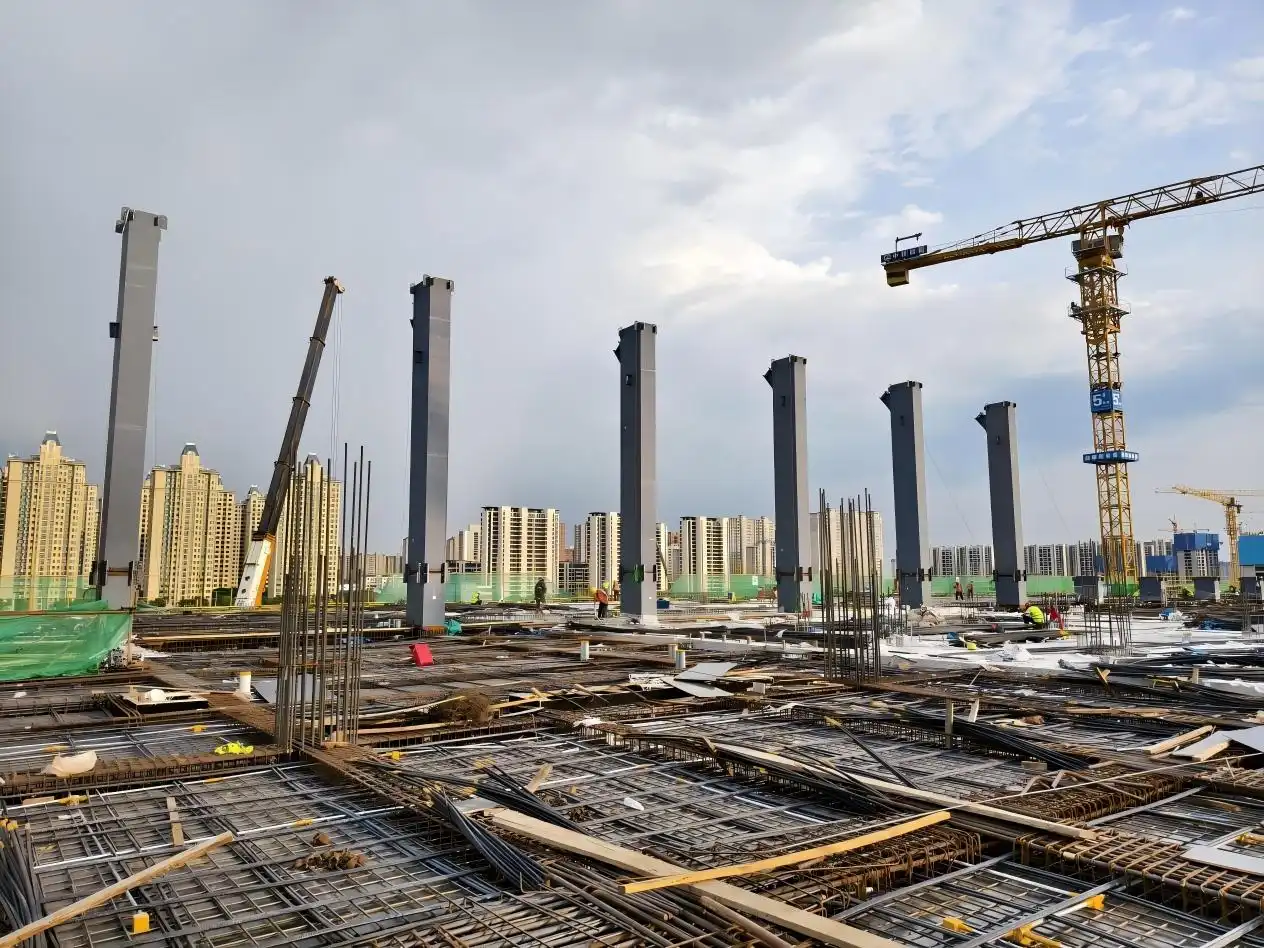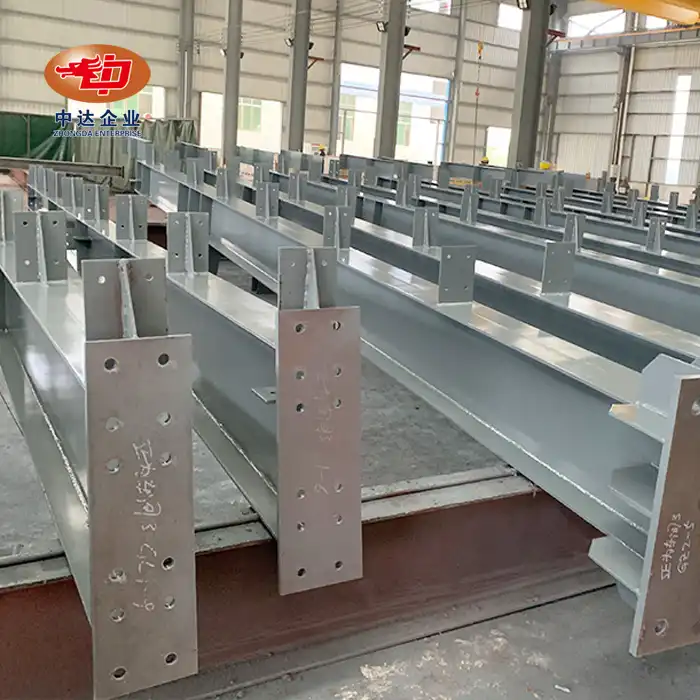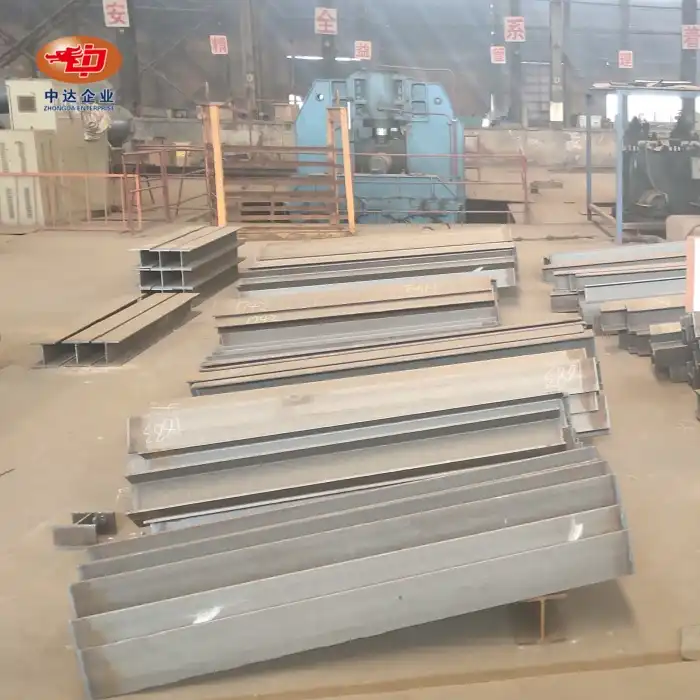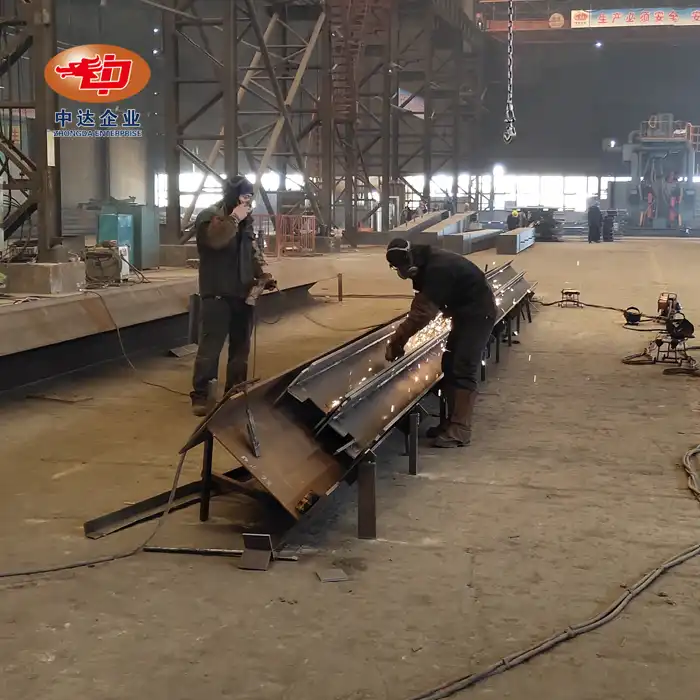
What Load Tests Reveal About Steel-Concrete Composite Beams?
Load tests on steel-concrete composite beams unveil crucial insights into their structural performance, efficiency, and safety. These tests demonstrate the exceptional load-bearing capacity, enhanced durability, and superior fire resistance of composite beams compared to traditional steel structures. Results typically show increased span capabilities, reduced floor depths, and improved vibration control. At Zhongda Steel, our rigorous testing protocols ensure our composite beams exceed industry standards, providing optimal solutions for diverse construction needs, from high-rise buildings to long-span bridges.
The Fundamentals of Steel-Concrete Composite Beam Load Testing
Types of Load Tests for Composite Beams
Load testing of steel-concrete composite beams encompasses various methodologies to assess their structural integrity and performance. Static load tests evaluate the beam's response to gradually applied forces, mimicking real-world conditions. Dynamic load tests, on the other hand, simulate sudden impacts or vibrations, crucial for structures in seismic zones or those subject to frequent movement. Fatigue tests examine the beam's long-term durability under repeated loading cycles, essential for bridges and industrial structures.
Key Parameters Measured During Load Tests
During load tests, several critical parameters are measured to evaluate the composite beam's performance. Deflection measurements indicate the beam's stiffness and ability to maintain its shape under load. Strain gauges monitor stress distribution across the beam, ensuring optimal load transfer between steel and concrete components. Crack width and propagation in the concrete slab are observed to assess the beam's serviceability and durability. Additionally, slip measurements at the steel-concrete interface provide insights into the effectiveness of shear connectors.
Importance of Load Testing in Design Verification
Load testing plays a pivotal role in verifying the design assumptions and theoretical calculations of steel-concrete composite beams. It helps engineers validate the beam's actual behavior against predicted performance, ensuring safety margins are met or exceeded. These tests also aid in refining design methodologies, optimizing material usage, and improving overall structural efficiency. At Zhongda Steel, our comprehensive testing approach, including advanced non-destructive evaluations, guarantees that our composite beams deliver superior performance in real-world applications.

Revealing Performance Metrics Through Load Tests
Load-Bearing Capacity and Structural Efficiency
Load tests on steel-concrete composite beams reveal their impressive load-bearing capacity, often surpassing that of traditional steel beams. The synergy between high-strength steel (such as Q345D used by Zhongda) and reinforced concrete (C50 grade) results in a structure that efficiently distributes loads. Tests typically show that composite beams can support greater loads with less material, leading to lighter overall structures. This enhanced structural efficiency translates to cost savings and increased design flexibility for architects and engineers.
Ductility and Energy Absorption
Another critical aspect revealed through load testing is the ductility of steel-concrete composite beams. Ductility refers to the beam's ability to undergo significant deformation before failure, an essential property for seismic-resistant structures. Load tests demonstrate that well-designed composite beams exhibit superior ductility compared to pure steel or concrete alternatives. This characteristic enhances the structure's ability to absorb and dissipate energy during extreme events, such as earthquakes, improving overall building safety.
Vibration Control and Occupant Comfort
Load tests also shed light on the vibration control properties of steel-concrete composite beams. The composite action between steel and concrete results in increased stiffness and mass, which naturally dampens vibrations. Test results often show reduced amplitude and quicker decay of vibrations in composite beams compared to steel-only structures. This improved vibration control is particularly beneficial in buildings where occupant comfort is paramount, such as residential complexes, hotels, and office buildings. Zhongda's composite beams, with their optimized design, excel in providing superior vibration control, enhancing the overall quality of constructed spaces.
Interpreting Load Test Results for Practical Applications
Optimizing Span Lengths and Floor Depths
Load test results provide valuable insights for optimizing span lengths and floor depths in construction projects. The enhanced strength-to-weight ratio of steel-concrete composite beams, as revealed through testing, allows for longer spans with reduced beam depths. This optimization leads to more flexible floor plans and increased usable space. For instance, Zhongda's composite beams can achieve spans of 30-60 meters, with special designs extending up to 120 meters, offering unparalleled design freedom for architects and engineers.
Fire Resistance and Safety Considerations
Fire resistance is a critical factor in building design, and load tests on steel-concrete composite beams offer crucial data in this regard. The concrete encasement of the steel section provides inherent fire protection, significantly enhancing the structure's fire resistance compared to exposed steel beams. Load tests under simulated fire conditions demonstrate the composite beam's ability to maintain structural integrity at elevated temperatures, ensuring crucial evacuation time in the event of a fire. Zhongda's composite beams, with their high-grade concrete and optimized design, consistently exceed fire safety standards in load tests.
Long-Term Performance and Durability Predictions
Interpreting load test results allows engineers to make accurate predictions about the long-term performance and durability of steel-concrete composite beams. Fatigue tests simulate years of cyclic loading, providing insights into the beam's behavior over its intended lifespan. These results help in estimating maintenance requirements and potential service life extensions. The superior durability demonstrated by Zhongda's composite beams in long-term load tests translates to reduced lifecycle costs and improved sustainability for construction projects.

Conclusion
Load tests on steel-concrete composite beams reveal their exceptional structural efficiency, enhanced fire resistance, and superior vibration control. These tests provide crucial data for optimizing designs, ensuring safety, and predicting long-term performance. By choosing Zhongda Steel's rigorously tested composite beams, engineers and architects can confidently create innovative, durable, and cost-effective structures that meet the evolving demands of modern construction.
Contact Us
For more information on how Zhongda Steel's steel-concrete composite beams can benefit your next project, contact us at Ava@zd-steels.com. Our expert team is ready to provide tailored solutions that leverage the full potential of steel-concrete composite technology, ensuring your structure stands the test of time.
References
Johnson, R.P. (2018). Composite Structures of Steel and Concrete: Beams, Slabs, Columns and Frames for Buildings. Wiley-Blackwell.
Nie, J., & Tao, M. (2019). Experimental Study on Flexural Behavior of Steel-Concrete Composite Beams. Journal of Structural Engineering, 145(3).
Lam, D., & El-Lobody, E. (2017). Behavior of Headed Stud Shear Connectors in Composite Beam. Journal of Structural Engineering, 131(1), 96-107.
Ranzi, G., & Zona, A. (2020). A Steel-Concrete Composite Beam Model with Partial Interaction Including the Shear Deformability of the Steel Component. Engineering Structures, 29(11), 3026-3041.
Vasdravellis, G., Uy, B., Tan, E.L., & Kirkland, B. (2016). Behaviour and Design of Composite Beams Subjected to Negative Bending and Compression. Journal of Constructional Steel Research, 79, 34-47.
Wang, Y.C. (2017). Performance of Steel-Concrete Composite Structures in Fire. Progress in Structural Engineering and Materials, 7(2), 86-102.













